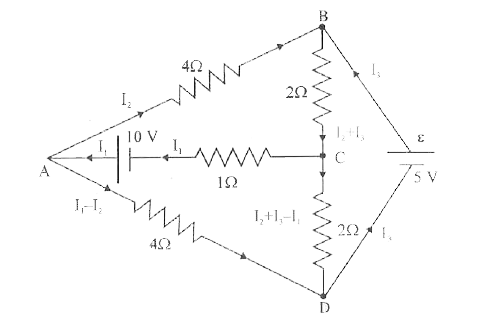SOLVED PROBLEMS from NEW JYOTHI PHYSICS (TAMIL ENGLISH) CURRENT ELECTRICITY for Class 12
| Class 12 | PHYSICS |
| Chapter | CURRENT ELECTRICITY |
| NEW JYOTHI PHYSICS (TAMIL ENGLISH) | SOLVED PROBLEMS |
| Medium | English |
| Academic Year | 2023-2024 |
Question 2
(a) Esttimate the average drift speed of conduction electrons in a copper wite of cross-secttonal area 1.0×10−7m2 carrying a current of 1.5A. Assume the each copper atom contrbutes roughly one conduction electron. The density of copper is 9.0×103kg/m3, and its atomic mass is 63.5u. (b) Compare the drift speed obyained above with, (1) thermal speeds of copper atoms at ordinary temperaturtes. (ii) speed of propagation of electric field along the conductor which causes the drift motion. View SolutionQuestion 3
(a) In the above example, the electron drift speed is estimated to be only a few mm s−1 for currents in the range of a few amperes, How then is current established almost the instant a circuit is closed?
(b)The electron drift arises due to the force experienced by electrons in the electric fieldinside the conductor. But force should cause acceleration. Why then do the electrons acquire a steady average drift speed?
If the electron drift speed is so small, and the electron's charge is small, how can we still obtain large amounts of current in a conductor?
(d)When electrons drift in a metal from lower to higher potential, does it mean that all the "free' electrons of the metal are moving in the same direction?
(e) Are the paths of electrons straight lines between successive collisions (with the positive ions of the metal) in the (i) absence of electric field, (ii) presence of electric field?View SolutionQuestion 8
An electric toaster uses nichrome for its heating element. When a negligibly small current passes through it, its resistance at room temperature (27.0∘C) is found to be 75.3Ω. When the toaster is connected to a 230 V supply, the current settles, after a few seconds, to a steady value of 2.68 A. What is the steady temperature of the nichrome element? The temperature coefficient of resistance of nichrome averaged over the temperature range involved, is 1.70×10−4∘C−1View SolutionQuestion 22
The four arms of a Wheatstone bridge have the following resistances: ΑΒ = 100Ω, BC = 10Ω, CD = 5Ω, and DA = 60 Ω,

A galvanometer of 15Ω resistance is connected across BD. Calculate the current through the galvanometer when a potential difference of 10V is maintained across ACView SolutionQuestion 26
A potentiometer wire has a length 400 cm and a resistance of 20Ω. It is connected in series with an external resistance R and a cell of e.m.f. 1.5 V and internal resistance 1Ω. A source of e.m.f.6 mV is balanced against a length of 30 cm of the potentiometer wire. Find R. According to the principle of potentiometer V∝l.
i.e., V = ilp where l'is the balancing length & p the resistance per cm of the potentiometer wire.View Solution








